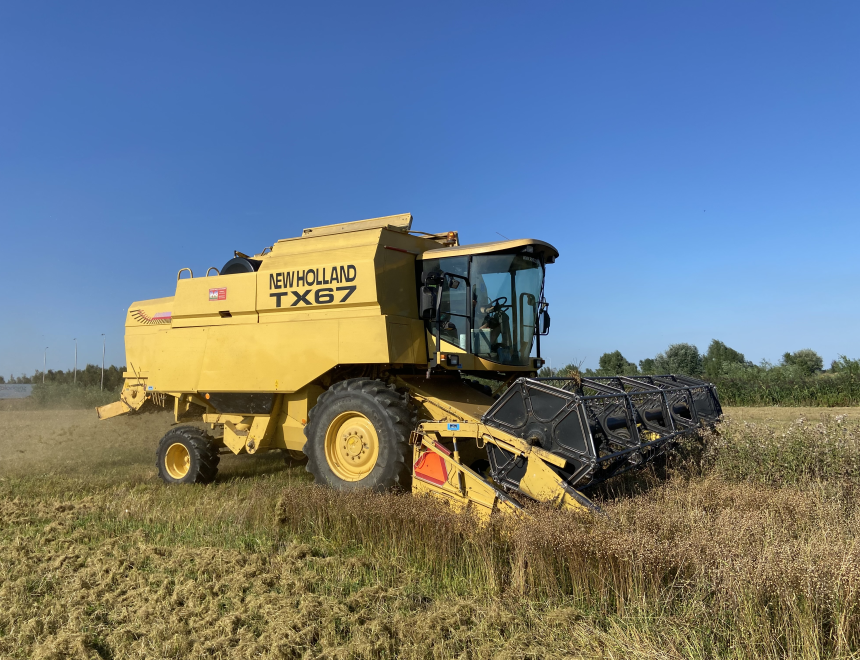Linseed harvest for Linseed stand oil paint (VIDEO)

On the 159th day after sowing, the time had finally come. Our linseed was ready for harvest. Watch the video of the combine harvest carried out by RvR Loonbedrijf here.
Do you remember how our linseed was sown for the cultivation of the Linseed Oil we need? We grow linseed oil for TOPLIN Linseed Stand Oil Paint: modern paint systems based on authentic materials that are applied to current and future heritage. After all, monumental heritage should preferably be renovated using paint systems that do as much justice as possible to the authentic character of the substrate.
After 159 days, the linseed was ready for harvest. We were allowed to take a trip on the combine harvester in order to observe the process in its entirety.
The linseed needs to be sufficiently dry to make sure the moisture level of the linseed oil is not too high and to prevent festering and rotting. Arnoud from RvR Loonbedrijf from Hoofddorp tries the linseed in order to assess it. After a few nice, sunny days, the time had come: the linseed was ready for harvest.
In this video, you can see how it's done!
The harvest yielded 10 tonnes of linseed from 4 hectares of soil. After harvesting, the linseed has to be "cleaned" and packaged in 25-kg bags so it can be transported to oil mill De Bonte Hen, which is part of the De Zaansche Molen association at the Zaanse Schans. The millers of De Bonte Hen press the linseed to produce linseed oil, which we then use to produce TOPLIN Linseed Stand Oil Paint and ROYL floor oil.
With this Dutch linseed oil, we cover 25% of our linseed oil needs for an entire year of TOPLIN Linseed Stand Oil Paint and ROYL Oil production. Better yet, we help to keep a piece of World Heritage in operation. The mills take the linseed cakes, a residual product of linseed oil production, to local farmers to use as animal fodder, while the linseed straw is used for their stables. This way, the craft of linseed oil cultivation is kept alive, and we contribute to the transparency of the production chains from farmer to dinner plate, or, in our case, from farmer to paint to monument.
Theme: sustainability - sustainable paint - sustainable production - Dutch Linseed Oil - bio-based materials.